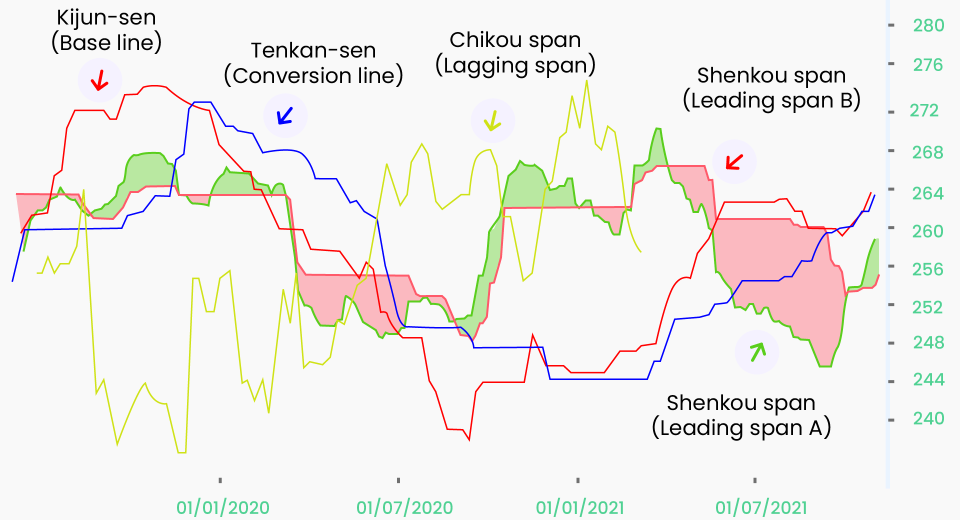A Beginner’s Guide to CFD Trading

Contracts for difference (CFDs) allow traders to take advantage of rising and falling asset prices. They are derivative instruments where a trader enters into a contract to exchange the difference in asset price from when the contract is opened to when it is closed. Since it allows speculation on price change, traders can access more trading opportunities irrespective of direction. For this, they do not need to own the underlying asset, which is a major benefit. They only speculate on the direction of price change. So they do not have to worry about the storage or security of the asset.
Another major reason for the popularity of CFD trading is leverage. Traders can open larger positions than the capital or margin in their trading account. The trader needs only fund a fraction of the total position, with the broker lending the remaining amount. This allows traders to enhance their market exposure exponentially. However, it is important to remember that larger exposure means both profit and loss potential will be magnified. This is why experienced traders exercise caution while choosing the leverage amount.
Here’s everything beginners need to know about CFD trading.
Basics of Leveraged CFD Trading
Forex, indices, commodities, stocks and cryptocurrencies can all be traded via CFDs. CFDs are based on live market prices, giving traders the same exposure to market volatility as buying and selling the underlying asset. This derivative instrument enables traders to capitalise on the difference in asset price between the contract’s opening and closing dates.
Opening a Long Position
When traders predict that the price of a security is likely to rise, they tend to open a long position using CFDs. However, there is a minimum capital requirement for every security, known as the margin, which the trader needs to fund. For instance, a leverage of 1:100 means that the trader must fund $1 to open a position worth $100 while the broker provides the remaining $99. Leverage limits can differ between asset classes, as mandated by the regulatory bodies.
After the price has reached the estimated maximum, traders can close the contract. Once the position is closed, they will need to return the capital borrowed from the broker. So, their earnings will be the remaining amount.
As mentioned earlier, the loss potential is amplified with leverage. Now, if the asset price does not move in the predicted direction, the trader could incur a loss. But they still need to return the borrowed capital. This is where risk management measures are indispensable in limiting losses, such as setting a stop loss level when opening a position.
Opening a Short Position
Traders open a short position when they expect the asset price to decline. Short selling involves buying the CFD of an asset from the broker to sell in the market and then repurchasing it from the market after its price has declined.
Here, traders pay only the minimum margin amount to buy the asset from their broker. Next, they sell the CFD and wait for the price to reach the target value. Once, the price hits the estimated lower limit, they buy the CFD back and return the asset to the broker. Their profit is the amount left after returning what they borrowed from the broker.
However, if there is an uptick in the price, traders will have to buy back at a higher price. This means they will lose money but still have to return the borrowed capital.
Build a Trading Plan
A popular saying in the trading fraternity is to “plan the trade and then trade the plan.” The first step to trading any instrument is to build a trading strategy. It encompasses considering one’s trading goals, available capital, risk appetite and timeframe to identify entry and exit points when market opportunities arise.
Choose a Brokerage
The broker plays a key role in a trader’s market experience. Choosing the right brokerage is the first step to building a viable trading plan. A few considerations while choosing the brokerage are:
- Instruments supported
- Fee, commissions and spreads
- Leverage offered
- Regulatory compliance and recognition
- Available modes of deposit and withdrawal
- Trading facilities provided, such as education, trading tools and platforms
- Availability and quality of customer service.
Pick an Instrument
The best instrument to pick is one that you are familiar with. Starting with an instrument and market that you understand gives you an edge. Since you already know the factors that move the price, you can gauge the direction of price movement with the help of the right indicators.
Improve your education
Understanding market movements and triggers of price change is essential to developing a robust trading strategy. Learn about trading indicators and how to use them on price charts under different market conditions. Additionally, learn to use risk management measures, such as stop loss, trailing loss and take profit. Your strategy should be solid and without gut feeling or any other emotion.
Practice on a Demo Account
Practise helps traders improve the accuracy of their price predictions, learn to time trades and, most importantly, assess and fine-tune their trading strategy. Traders open a demo account to build and test trading strategies, including risk management. A demo account also helps familiarise traders with their chosen asset, the trading platform and various trading tools. They can also backtest their strategy to assess its applicability in diverse market conditions. Often, traders develop different strategies for different markets, such as ranging, rising or declining.
Go Live
When you feel confident and ready, open a live account. Record your trades in a trading journal and regularly analyse your performance to hone your skills. And don’t forget to go back to the demo account before venturing into new markets.
To Sum Up
- CFD trading allows you to take advantage of both upward and downward price movements.
- CFDs are leveraged instruments that can enhance profits but also magnify loss potential.
- Start by choosing a suitable broker and a market you understand to begin CFD trading.
- Develop a trading strategy on a demo account before entering the live markets.
- Embed risk management within the trading strategy and practice using stop-loss and take-profit on a demo account.
After entering the live markets, monitor your trades and refine your strategy according to market conditions.
Disclaimer:
All data, information and materials are published and provided “as is” solely for informational purposes only, and is not intended nor should be considered, in any way, as investment advice, recommendations, and/or suggestions for performing any actions with financial instruments. The information and opinions presented do not take into account any particular individual’s investment objectives, financial situation or needs, and hence does not constitute as an advice or a recommendation with respect to any investment product. All investors should seek advice from certified financial advisors based on their unique situation before making any investment decisions in accordance to their personal risk appetite. Blackwell Global endeavours to ensure that the information provided is complete and correct, but make no representation as to the actuality, accuracy or completeness of the information. Information, data and opinions may change without notice and Blackwell Global is not obliged to update on the changes. The opinions and views expressed are solely those of the authors and analysts and do not necessarily represent that of Blackwell Global or its management, shareholders, and affiliates. Any projections or views of the market provided may not prove to be accurate. Past performance is not necessarily an indicative of future performance. Blackwell Global assumes no liability for any loss arising directly or indirectly from use of or reliance on such information herein contained. Reproduction of this information, in whole or in part, is not permitted.




